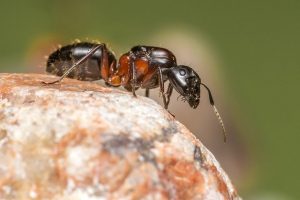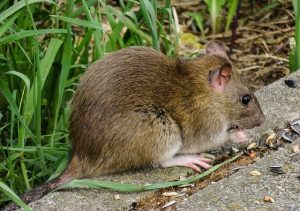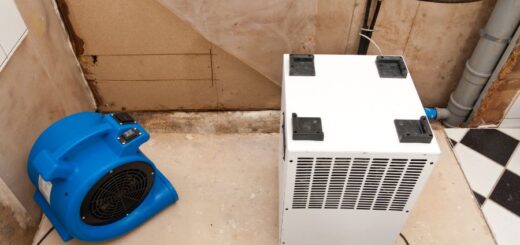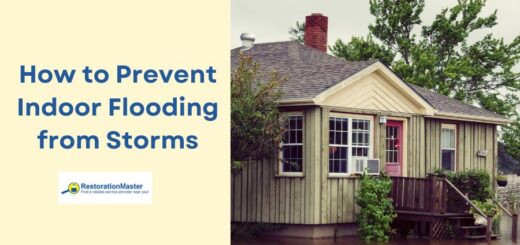What Happens to Pests During a Flood?
In-home floodingFlooding is the overflow or accumulation of water in areas t... More can leadLead is a heavy metal that can be toxic to humans, especiall... More to many headaches for homeowners – including a pest infestation. If you’re in an area affected by floodingFlooding is the overflow or accumulation of water in areas t... More, most experts would advise you not to make direct contact with the floodwater unless you absolutely have to. You should also beware of nasty pests invading your property. With this in mind, we’ll have a look at some of the most common pest-related issues after floods.
Ants
While we don’t traditionally think of ants as horrible pests; you’d be surprised as to how many homes have ant-related issues after and during floodingFlooding is the overflow or accumulation of water in areas t... More. That’s not a coincidence; there’s a reason why ants look to infest your home during and after a flood. The first thing that happens during such an event is that water flushes them out of the ground.
If there’s an ant colony nearby, they’ll attempt to go out of their old nest and find the nearest dry and high ground. In most situations – this means your house. In fact, many of these ants may succeed in clinging to things that are floating in the water. And as the waters recede after the flood, you may find your home has an ant problem.
Do You Have an Ant Problem?
Naturally, having some ants in your home is not such an issue; it only becomes a problem if there is an actual infestation. Considering that – what are some of the signs that you have a true ant issue on your hand? Well, first – if you see many live ants at once, especially in the kitchen area; that’s a problem. Or, if you see ant pathways around your home.
Ants have a way of going in and out of places – and that includes your premises. Also, you may even find ant nests near your house if you still haven’t cleaned the place out after the flood. These are pretty easy to spot – we’re talking about piles of dirt or soil. And there are certain ant species that can even nest in your walls or other dark and quiet places.
Rodents
Just like ants, after a flood or a stormy night; plenty of rodents may be forced out of their usual habitats. In that situation, they’ll look for a place which can give them shelter or food – and that can mean your house, shed, barn, or other connected building.
Rodents like mice and rats will attempt to find higher and safer ground during a flood; they’ll even go as far as to make their way into a parked car. So, be careful – while there are ways to get rid of rats and mice, it can be devilishly difficult. And in some very extreme cases, rat migrationMigration is the movement of water, contaminants, or air fro... More can mean dangerous health issues for people nearby. Keeping that in mind – beware of migrations of flood rats.
Is Your Rat Problem Serious?
Just like with ants – while a single rat may be a disgusting sight, it doesn’t mean that you have a genuine rat infestation on your hands. Of course – there are specific signs of a chronic rat problem that you should watch out for. For example – concentrated rat droppings. If you find them in specific locations time and time again; this means you’re probably dealing with a rat that’s made its way into your home for good.
Also, there are scratching noises that you may not be able to explain. Know that rats are exceptionally good climbers – especially black ones. That’s why we call these “roof rats”. They can pretty easily gain access into even high-storied buildings, making their way to the roof. So, if you hear any scratching noises during the night, this is a probable indicator of their presence.
On the other hand, brown rats are not as adept when it comes to climbing. These can be more often identified by the chattering or grinding noise that they make using their teeth; mostly while scurrying under floorboards or decks.
Other Signs of Rats
While these are the most common signs of rats, there are others as well. For instance – if you have less-used, dusty areas; rats may leave visible tail and foot marks. Take a strong flashlight and point it at a low angle. If you’re dealing with rats, you’ll be able to spot clear tracks.
Of course, these could be old tracks from long-gone rats. If you want to see how fresh these tracks are, sprinkle some talc or flour nearby. Check on the spot the next day – any active rats will have been attracted to the scent by then.
Also, you’ll find that rats don’t deviate much from established routes along walls and skirting boards; that’s due to their sub-standard eyesight. With this in mind, know that they’ll leave marks on objects that they brush against. Though, seeing as these smears could be intact for longer time periods, they’re not a certain sign of a current infestation in and of themselves.
If we’re talking about brown rats, another sign of their presence is burrowing. Brown rats are known to excavate and dig extensive burrows that they use for nesting and food storage. You can usually spot these next to solid structures or objects, such as garages or garden sheds.
Other Pests
When storms or floods hit your premises, you could also expect to face pests like cockroaches and flies. Remember, sewageSewage is wastewater containing biological and chemical cont... More systems can easily overflow during a flood. This gathered sewageSewage is wastewater containing biological and chemical cont... More waste attracts flies that lay eggs on any kind of rotting organic matter that they can find. Also, cockroaches will probably seek dry and warm shelter during a flood. Cockroaches are particularly dangerous, seeing as they’re known to carry disease.
Professional Flood Damage RestorationRestoration is the process of returning a property to its pr... More
In the aftermath of a flood, dealing with pest problems is important and so is restoring your home. Professionals that provide flood damage restoration will remove all water from your home, thoroughly dry the affected areas and materials, and restore the resulting damage. Removing the water and fixing the damage caused by a flood will eliminate the conditions that attract pests to your home.














